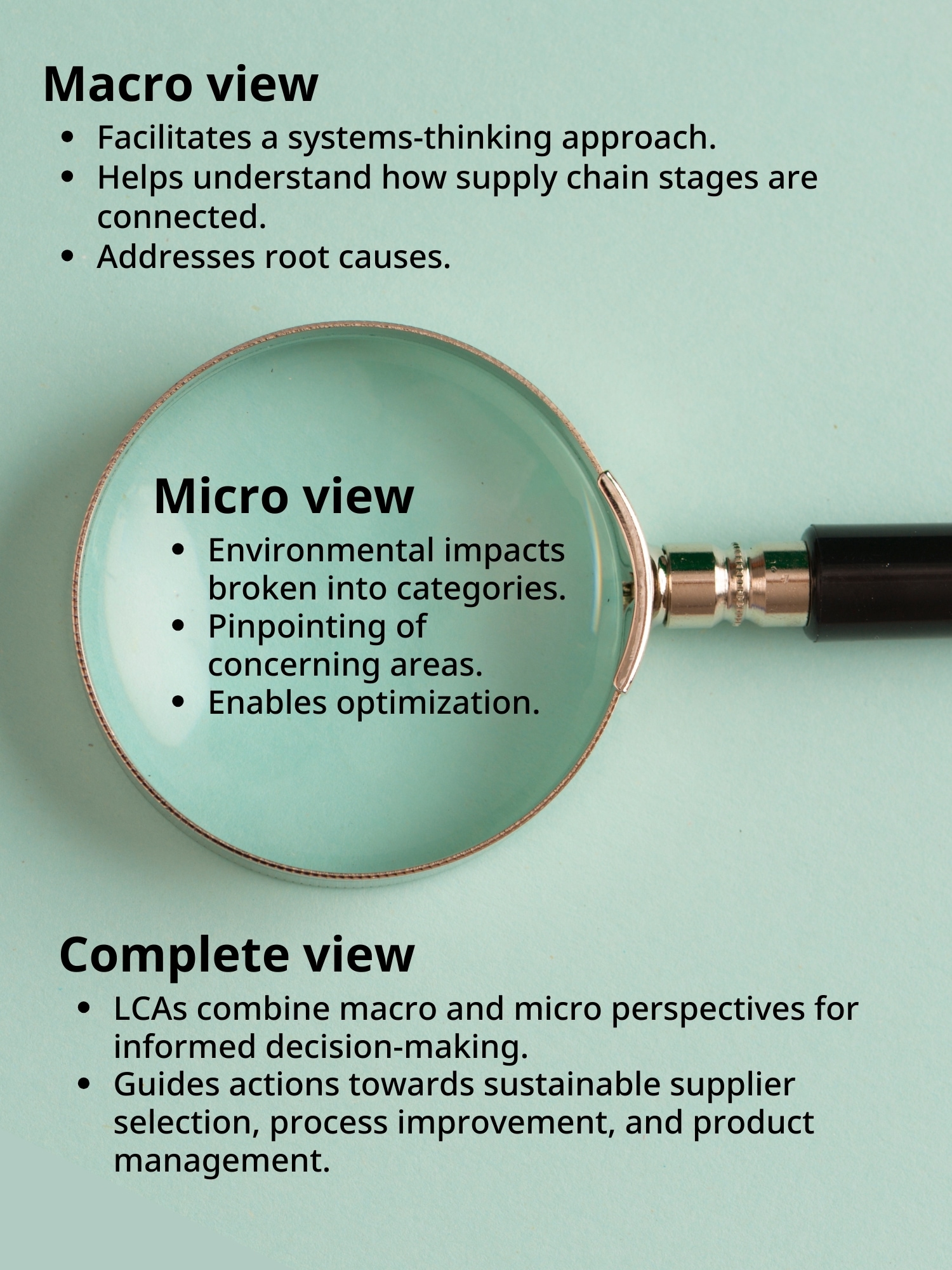LCA: From macro to micro
Visit BSI's Experts Corner: Home for insights from BSI’s practice directors and industry experts on digital trust, environmental, health, safety, security, and sustainability.
February 15, 2024 - As environmental regulations are tightening and sustainability is becoming the driving force behind many business decisions, Life Cycle Assessment (LCA) implementation is a pivotal tool for understanding supply chains.
For those who aren’t fully aware of the significance of LCAs, let’s recap on our series so far: in LCA and its role in sustainability, we explore how product LCAs help tackle sustainability challenges; while You can’t manage what you can’t measure: Leveraging LCAs looks at the value of providing quantitative data to measure an organization’s environmental impacts.
Now, we discuss how LCAs empower organizations with a macro view of environmental impacts, while also giving the ability drill down into finer details to help make informed sustainability decisions.

Macro view
LCA implementation is instrumental in showing the big picture of a supply chain's ecological performance. It facilitates a systems-thinking approach – taking the overall system into account - allowing businesses to see beyond individual processes to understand the interconnectedness of various stages within the supply chain.
For instance, a textile company implementing an LCA may discover that water usage in the dyeing process is a major contributor to its environmental impact. A systems-thinking approach prompts the company to either:
- Explore alternative dyeing methods that use less water
OR
- Invest in water recycling systems - addressing the root cause rather than merely mitigating symptoms
Micro view
While providing a big picture view, LCAs also excel at zooming in on the fine details. It breaks down the environmental impact into specific categories including:
- Global greenhouse gas (GHG) emissions
- Water usage
- Energy consumption
This granularity allows businesses to pinpoint areas of concern and prioritize interventions based on their significance.
Consider a pharmaceutical company, which produces a medicine with raw materials sourced from a variety of different locations or countries. LCAs may reveal that a large portion of its carbon footprint stems from materials transportation. By investigating the details, the company can explore options such as optimizing transportation routes, using more fuel-efficient vehicles, or sourcing locally to reduce emissions.
The pharmaceutical sector has been jolted forward in its sustainability efforts by the recent announcement at COP28 of a new standard for LCAs of medicines and healthcare products. The initiative aims to establish agreement among various stakeholders, including healthcare systems, providers, academics, and patients.
The healthcare industry accounts for over 4 percent of GHG emissions, meaning the impacts of this LCA standard could be far-reaching. It has the potential to spur critical reductions in industries from manufacturing and transportation, to waste and energy use – essentially providing a roadmap for other industries to improve environmental footprints.
Complete view
By combining a macro perspective with micro details, LCAs equip businesses with the knowledge needed to make informed decisions. Whether it's selecting sustainable suppliers, improving manufacturing processes, or enhancing end-of-life product management, an LCA guides actions that contribute to overall environmental responsibility.
Watch for more in Ramin’s upcoming series on LCAs in supporting global sustainability initiatives. Visit BSI’s Experts Corner for more insights from industry experts. Subscribe to our Experts Corner-2-Go LinkedIn newsletters for a roundup of the latest thought leadership content: Digital trust, EHS, supply chain.




